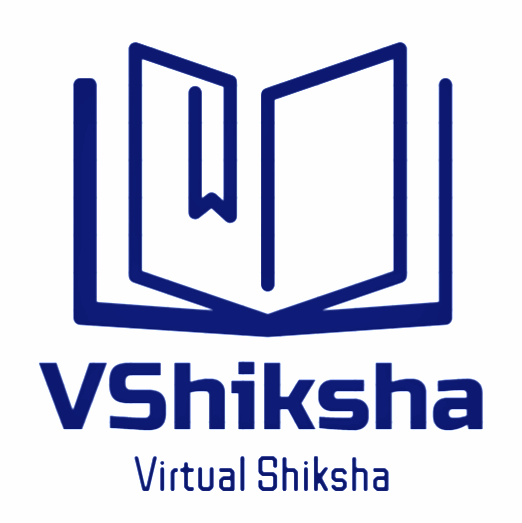Comprehensive Guide to Admission Opportunities in US Universities for Indian Students in 2025

Introduction
The allure of studying in the United States for Indian students lies not just in the prestige of its universities but in the promise of unparalleled academic and career growth. As we approach 2025, this guide aims to provide an in-depth look into the pathways, strategies, and opportunities that await Indian students seeking to study in the US. From understanding the nuanced requirements of various universities to navigating scholarship landscapes and intakes, this article merges insights into a detailed exploration.
Why Study in the USA?
- Academic Excellence: Universities like MIT, Stanford, Harvard, and Caltech are globally recognized for their academic standards and innovative research.
- Diverse Program Offerings: Whether it's Computer Science at Stanford, Business at Wharton, or Engineering at MIT, the US hosts programs that cater to every academic interest.
- Career Prospects: The US education system is closely linked with industry, providing excellent job prospects and post-study work opportunities through programs like OPT.
- Cultural Diversity: Exposure to a diverse student body from around the globe prepares students for international careers.
- Innovation and Entrepreneurship: Many US universities encourage entrepreneurial ventures, offering access to venture capital and mentorship.
Key US Universities for Indian Students
Undergraduate Programs:
- Massachusetts Institute of Technology (MIT)
- Notable Programs: Computer Science, Engineering, Physics
- Tuition: Approximately $53,790/year
- Highlights: Known for its rigorous curriculum and hands-on learning, MIT is a hub for future innovators.
- Stanford University
- Notable Programs: Computer Science, Business, Engineering
- Tuition: Around $56,169/year
- Highlights: Offers a blend of tech and entrepreneurship, with close Silicon Valley ties.
- University of California, Berkeley
- Notable Programs: Computer Science, Engineering, Business
- Tuition: Roughly $44,007/year for out-of-state students
- Highlights: Strong emphasis on public service alongside academic excellence.
- Harvard University
- Notable Programs: Economics, Biology, Computer Science
- Tuition: Approximately $51,925/year
- Highlights: Renowned for its liberal arts education and extensive alumni network.
- Yale University
- Notable Programs: Arts, Humanities, Science
- Tuition: About $57,700/year
- Highlights: Focus on undergraduate teaching with small class sizes for personalized attention.
Graduate Programs:
- California Institute of Technology (Caltech)
- Notable Programs: Physics, Engineering, Astronomy
- Tuition: $56,364/year
- Highlights: High faculty-to-student ratio for intensive research opportunities.
- Carnegie Mellon University
- Notable Programs: Computer Science, Robotics, Business
- Tuition: Around $50,000/year
- Highlights: A leader in technology and business education.
- University of Pennsylvania (UPenn)
- Notable Programs: Wharton School of Business, Engineering
- Tuition: About $41,000/year for master's programs
- Highlights: One of the oldest Ivy League schools with a strong business focus.
- Cornell University
- Notable Programs: Agriculture, Engineering, Business
- Tuition: Approximately $30,000/year for graduate programs
- Highlights: Diverse academic departments spread across its unique campus structure.
- Princeton University
- Notable Programs: Engineering, Public Affairs, Humanities
- Tuition: Around $56,000/year
- Highlights: Offers a comprehensive financial aid package, making education more accessible.
Navigating Admission Requirements
- Academic Records: For undergraduates, a strong performance in high school is crucial. For postgraduates, an excellent undergraduate record is necessary. Transcripts often need evaluation.
- Standardized Testing:
- Undergraduates: SAT/ACT and TOEFL/IELTS for English proficiency.
- Graduates: GRE/GMAT for most programs, with TOEFL/IELTS for non-native English speakers.
- Letters of Recommendation: Typically 2-3, from teachers, professors, or professional mentors who can vouch for your abilities.
- Statement of Purpose (SOP): This narrative should reflect your academic and career aspirations, demonstrating how the program aligns with your goals.
- Resume/CV: Highlight academic achievements, extracurricular activities, internships, or research work.
- Financial Proof: Essential for visa applications, showing you can fund your education in the US.
Strategic Application Planning
- Intakes:
- Fall (September): The primary intake with the most courses and scholarship opportunities. Application deadlines range from November to January.
- Spring (January): Offers a second chance for those who missed the fall intake or need more preparation time, with deadlines from July to November.
- Summer (May): Limited but ideal for specific programs or to accelerate one's degree.
- Application Strategy:
- Early Action vs. Regular Decision: Early applications can offer an edge at some universities.
- Customization: Tailor each application to reflect your fit for the specific program and institution.
- Preparation for Interviews: Some programs require interviews; prepare by understanding the university culture and your fit within it.
Scholarships and Financial Aid
- University Scholarships: Merit-based, like the Stanford Reliance Dhirubhai Fellowship or Yale's need-blind aid for international students.
- External Scholarships:
- Government and Private: Fulbright-Nehru, KC Mahindra, Narotam Sekhsaria Foundation, AAUW for specific demographics or fields.
- Education Loans: Indian banks like SBI, HDFC provide education loans with favorable terms, some with government interest subsidies.
Challenges and Considerations
- Cultural Adjustment: The US academic and social environment might differ significantly from India, requiring adaptability.
- Financial Planning: Tuition, living expenses, health insurance, and unforeseen costs must be accounted for.
- High Competition: Especially for top-tier programs, the application process is highly competitive.
- Post-Graduation Plans: Understanding OPT, H1-B visas, and career opportunities in your field is crucial for long-term planning.
Visa Process
- F-1 Visa: Necessary for academic studies, involves securing an I-20 form from the university.
- SEVIS Fee: Must be paid before the visa interview.
- Documentation: Financial proof, academic records, and a clear intent to return to India post-study.
Conclusion
For Indian students eyeing US universities in 2025, the journey involves meticulous preparation, understanding the unique offerings of each institution, and leveraging all possible financial aids. This guide serves as a roadmap to navigate the complexities of studying abroad in the US, ensuring students can make informed decisions about their educational and career futures. With strategic planning and the right resources, Indian students can unlock a wealth of opportunities in one of the world's premier educational landscapes.
- Log in to post comments
